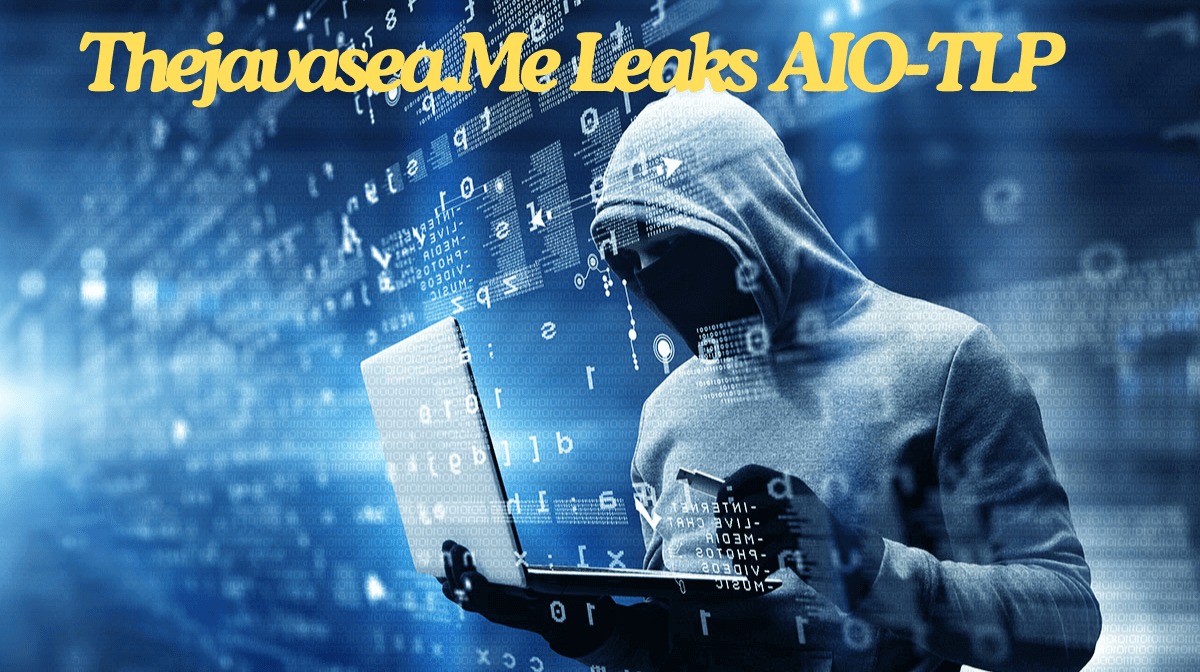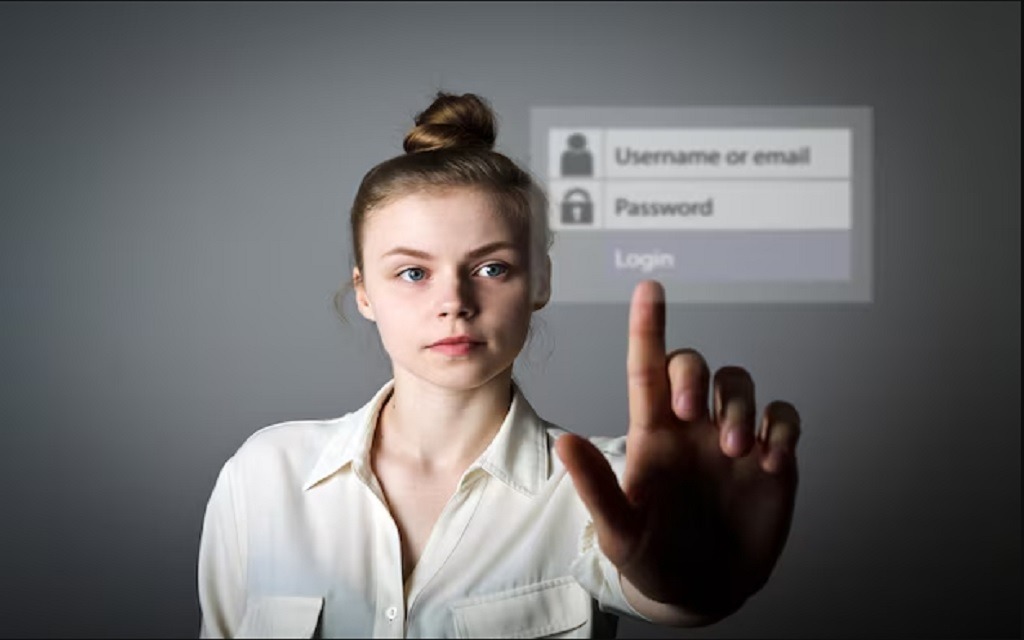Thejavasea.me Leaks AIO-TLP What You Need to Know
In today’s interconnected digital era, cybersecurity breaches have become increasingly common and sophisticated. With every leak or breach, both casual users and security professionals are reminded of the vulnerability inherent in modern software ecosystems. One such incident that has sparked discussion is the recent leak from TheJavaSea.me—a site known for sharing various types of digital content—which allegedly exposed an AIO-TLP file. This article delves into the details behind the leak, examines what AIO-TLP represents, discusses the potential dangers that such incidents pose, and offers practical advice on how to safeguard your digital life in an increasingly perilous cybersecurity landscape.
The leak of an All-In-One Tool/Package (AIO-TLP) file by TheJavaSea.me has raised immediate concerns regarding unauthorized access and the misuse of powerful digital tools. As technology evolves, so do the threats that can emerge from the sharing or exposure of software packages that might fall into the wrong hands. Cybersecurity breaches like this not only challenge our current security protocols but also stress the importance of proper digital hygiene and ethical software usage. In this article, we explore the origins and implications of the leak, evaluate the associated risks, and provide detailed recommendations on mitigating potential damage.
By investigating the event in depth, we aim to provide readers with a clear understanding of the incident, its context within the broader cybersecurity landscape, and the steps that can be taken to prevent similar occurrences in the future. Whether you are a casual internet user or a dedicated IT professional, understanding these issues is essential for navigating the complexities of modern digital security.
Understanding AIO-TLP
The term “AIO-TLP” stands for All-In-One Tool/Package—a bundled collection of software tools, scripts, and resources that can serve multiple purposes. Depending on the context and intention behind its use, AIO-TLP packages can be highly beneficial for developers, system administrators, and hobbyists alike. They often contain various utilities for system diagnostics, network testing, and even routine maintenance tasks. However, their multifaceted nature also means that if such a package falls into the wrong hands, it could be repurposed for malicious intent.
AIO-TLP packages are typically designed to streamline operations by bringing together several tools under one umbrella. For example, an AIO-TLP might include programs for vulnerability scanning, password cracking, network mapping, and data extraction. While these tools have legitimate uses—particularly in controlled, ethical hacking environments where security professionals test and secure systems—they can also be exploited to launch unauthorized intrusions or data breaches if used illegally.

Given the dual-use nature of these tools, the distinction between ethical and unethical use becomes blurred. In environments where security testing is rigorously authorized, such packages contribute positively by identifying and remedying weaknesses. However, when these tools are leaked or distributed without proper oversight, they can become potent instruments for cybercriminals. The context provided by the recent leak from TheJavaSea.me underscores the risks associated with uncontrolled access to such powerful software tools.
In summary, AIO-TLP is a double-edged sword—capable of enhancing cybersecurity for legitimate purposes but equally capable of undermining it when misused. Understanding its components and potential applications is the first step in recognizing the broader implications of the leak and the necessity for careful control over digital tool dissemination.
The Details of the Leak
The incident in question centers on TheJavaSea.me’s alleged release of an AIO-TLP file, a move that has significant implications for both users and cybersecurity professionals. According to the source, the leaked file comprises a suite of tools bundled together in a single package, which may include utilities that are powerful enough to compromise digital security if misappropriated. The leak was discovered by vigilant members of the online community who began questioning the legitimacy and potential impact of having such a file available on a public platform.
The sequence of events leading up to the leak appears to have been abrupt. TheJavaSea.me, known for its varied digital content, suddenly found itself at the center of a cybersecurity controversy when it was reported that an AIO-TLP file was made accessible. While the exact details surrounding the leak—such as who might have been responsible for uploading the file or the methods by which it was extracted—remain partially undisclosed, the fact that the leak occurred at all is a cause for concern. It suggests a lapse in internal security protocols or possibly an intentional act of releasing the file for broader scrutiny.

The response to the leak was swift. Online communities, including forums and social media platforms, quickly picked up on the news, discussing both the technical specifics of the package and the potential for malicious use. Security experts warned of the dangers associated with downloading or using leaked tools from unverified sources. The nature of the leaked file raises critical questions: Was this an inadvertent release due to negligence, or was it a calculated move designed to stir controversy? In either scenario, the incident highlights the pressing need for vigilance in the digital realm.
Furthermore, the leak has spurred a debate over the responsibilities of digital platforms that host such content. While TheJavaSea.me might argue that its role is to provide a space for sharing digital tools, it also bears a responsibility to ensure that the material does not pose a risk to public cybersecurity. The incident has opened up a broader discussion about the balance between information sharing and safeguarding against potential threats.
Potential Dangers and Risks
The release of an AIO-TLP file on a public website is fraught with risks and potential dangers that affect not only the users who might download the file but also the wider digital community. The following are some of the primary risks associated with the leak:
1. Malicious Use of Powerful Tools
AIO-TLP packages often contain sophisticated tools that, if used without proper oversight, can be repurposed for cyberattacks. These may include utilities for hacking into systems, bypassing security protocols, or extracting sensitive data. If cybercriminals acquire the leaked file, they could exploit its components to carry out unauthorized access and data theft.
2. Data Breaches and System Compromises
When tools designed for legitimate security testing are misused, the consequences can be dire. Hackers could use the leaked AIO-TLP to target vulnerable systems, leading to data breaches that expose personal information, financial details, or proprietary business data. Such breaches not only harm individual users but also damage the reputation and trustworthiness of affected organizations.

3. Legal Consequences
Possessing or distributing leaked software, particularly when it contains tools that facilitate unauthorized access, can result in serious legal repercussions. Users who download or use the leaked file may inadvertently become entangled in legal issues related to copyright infringement, computer misuse, or even criminal activity. The legal landscape surrounding cybersecurity is complex, and individuals caught using such tools without authorization could face significant penalties.
4. Propagation of Cybercrime
A significant concern is the potential for the leaked AIO-TLP file to contribute to a broader ecosystem of cybercrime. When powerful tools become widely available, they lower the barrier to entry for aspiring cybercriminals. This could lead to an increase in cyberattacks, with more individuals attempting to exploit digital systems for personal gain or malicious intent.
5. Reputational Damage to Digital Platforms
For platforms like TheJavaSea.me, hosting such leaked content can tarnish their reputation. While some sites may prioritize open access to digital tools and information, the inadvertent facilitation of cybercrime can have long-lasting negative effects on user trust and platform credibility. The leak not only impacts the immediate security landscape but also sets a precedent for future incidents, prompting users and experts alike to scrutinize similar platforms more closely.
The multifaceted dangers highlighted above underscore why the leak of an AIO-TLP file is not a trivial matter. It serves as a stark reminder that with the proliferation of digital tools comes an equally significant responsibility to manage and distribute them safely.
Recommended Best Practices and What to Do
In light of the risks posed by the leak, it is crucial for users, developers, and IT professionals to adopt a proactive stance when it comes to cybersecurity. The following recommendations provide guidance on how to protect yourself and ensure that you remain on the safe side of the digital divide.
1. Avoid Downloading Unauthorized Content
The first and most critical piece of advice is to refrain from downloading or using any leaked tools from unverified sources. Leaked files such as the AIO-TLP may appear to offer convenience, but the inherent risks far outweigh any potential benefits. Cybercriminals often embed malicious code or backdoors within such packages, which can compromise your system once executed.
2. Verify the Source
Always ensure that you are obtaining software and digital tools from trusted, reputable sources. Official websites, verified repositories, and authorized vendors are your best bet for ensuring that the tools you use are safe and reliable. Before downloading any file, check for reviews, user feedback, and security certifications that confirm its legitimacy.

3. Maintain Updated Security Software
Your first line of defense against malware and unauthorized access is robust security software. Ensure that your antivirus programs, firewalls, and anti-malware tools are updated regularly. These systems are designed to detect and neutralize potential threats, reducing the risk of infection from compromised files.
4. Implement Strong Access Controls
For organizations, it is critical to implement strong access control measures. This includes multi-factor authentication (MFA), regular password updates, and strict user permission settings. Limiting access to sensitive systems and data can help minimize the impact of a breach, should one occur.
5. Stay Informed About Cybersecurity Trends
The world of cybersecurity is ever-changing, with new threats emerging constantly. Staying informed about the latest developments and vulnerabilities can help you anticipate and mitigate risks. Follow reputable cybersecurity news outlets, join online forums, and participate in professional networks that focus on digital security.
6. Report Suspicious Activity
If you come across leaked content or suspect that your system may have been compromised, it is imperative to report the issue immediately to the relevant authorities or your organization’s IT department. Early detection and swift action are critical in containing potential breaches and mitigating their effects.
7. Educate Yourself and Others
Finally, invest time in educating yourself about the basics of cybersecurity. Whether it is through online courses, webinars, or community workshops, understanding the fundamentals of digital safety can empower you to make better decisions. Share this knowledge with friends, family, and colleagues to create a more secure digital environment for everyone.
By following these best practices, you can significantly reduce your exposure to the risks associated with leaked digital tools and contribute to a more secure online ecosystem. In the wake of the AIO-TLP leak, these recommendations are more relevant than ever as individuals and organizations navigate an increasingly complex cybersecurity landscape.
Analysis of the Cybersecurity Landscape
The leak of the AIO-TLP file by TheJavaSea.me is not an isolated event—it is part of a broader trend in which cybersecurity challenges are becoming more frequent and diverse. In this section, we analyze the current state of cybersecurity, the role of digital tool leaks in shaping the threat landscape, and the lessons that can be learned from recent incidents.
1. Evolving Threat Vectors
Cyber threats have evolved significantly over the past decade. While traditional viruses and malware once dominated the cybersecurity conversation, modern threats now include sophisticated phishing schemes, ransomware attacks, and the exploitation of zero-day vulnerabilities. The misuse of multi-tool packages such as AIO-TLP represents another dimension of the threat landscape. When such packages are leaked, they provide a ready-made arsenal for cybercriminals who can adapt these tools for a range of malicious activities.
2. The Role of Information Sharing Platforms
Digital platforms like TheJavaSea.me often serve as hubs for information sharing. While this can be beneficial by democratizing access to digital resources, it also comes with risks. Platforms that host sensitive or potentially dangerous content must balance openness with security. The recent leak highlights the need for these sites to implement stricter controls and oversight, ensuring that only verified and safe content is made available to the public.
3. Cybersecurity Awareness and Preparedness
Incidents such as the AIO-TLP leak serve as wake-up calls, emphasizing the importance of cybersecurity awareness. For both individuals and organizations, the key to mitigating risk lies in preparedness. This involves not only having the right technical defenses in place but also fostering a culture of security awareness. Regular training, updated security policies, and a proactive approach to threat detection are all essential components of a robust cybersecurity strategy.
4. Legal and Regulatory Implications
The legal ramifications of distributing or using leaked tools are severe. In many jurisdictions, possession of software designed for unauthorized access can lead to criminal charges. This creates a complex landscape in which ethical and legal boundaries are often blurred. Policymakers and regulatory bodies are continually working to update laws to address these modern challenges, but there is often a lag between technological innovation and legal frameworks.
5. The Future of Digital Security
Looking ahead, the cybersecurity landscape is likely to become even more complex as technology continues to advance. Artificial intelligence, machine learning, and quantum computing are poised to redefine the boundaries of what is possible—both for defenders and attackers. In this context, incidents like the AIO-TLP leak provide valuable lessons. They underscore the necessity of constant vigilance, continuous innovation in security measures, and the importance of public-private cooperation in tackling cyber threats.
The analysis of these trends reveals that while technological advancements offer tremendous opportunities, they also present new challenges that must be met with equal innovation and preparedness. The evolving nature of cyber threats requires an adaptive approach that integrates technical, legal, and educational strategies to protect against future incidents.
The leak of an AIO-TLP file by TheJavaSea.me serves as a stark reminder of the precarious balance between open access to digital tools and the need for robust cybersecurity measures. As explored throughout this article, the incident has significant implications for both individuals and organizations. From the misuse of powerful tools to the potential legal ramifications and broader impact on cybersecurity trends, this event underscores the complexity of managing digital information in today’s world.
In conclusion, while AIO-TLP packages can be immensely beneficial when used ethically and responsibly, their misuse represents a dangerous vulnerability. The leak not only highlights gaps in current security protocols but also serves as a call to action for improved practices in software distribution and cybersecurity education. Moving forward, it is imperative that developers, users, and platform administrators work together to ensure that digital tools remain in the hands of those who use them for legitimate purposes.
The future of cybersecurity will undoubtedly be shaped by how we respond to incidents like the AIO-TLP leak. Enhanced security measures, stricter regulatory frameworks, and greater public awareness are critical components in the fight against cybercrime. As technology continues to evolve, so too must our strategies for safeguarding digital assets. This incident should serve as both a cautionary tale and an impetus for change—urging all stakeholders to prioritize security and remain vigilant against emerging threats.
News -
Sophie Rain Spider Man Video Leak Navigating Privacy Ethics And Online Culture Sophie Rain A Popular Content Creator Known For Her Presence On Platforms Like Onlyfans And Social Media Has Recently Bee
Drea De Matteo OnlyFans Leaks Unveiling the Controversy and Its Impact
Hey Im Bee Onlyfans Leak Navigating Privacy Ethics And Online Culture